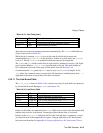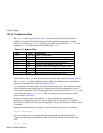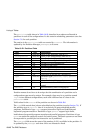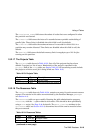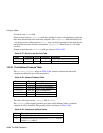
Listing of Tables
Table 10.24: Resources Tables (cont.)
Field Type Description
username char(16) name of the user
hostnames text list of hostnames allocated
status char(16) status of the resource
cpus text list of CPUs allocated
nodes text list of nodes allocated
startTime UTC time resources were allocated
endTime UTC time resources were deallocated
priority int current priority of the request
flags int scheduler flags for the resource
ncpus int number of cpus allocated
batchId int batch system identifier for the request
memlimit int memory allocated per CPU in megabytes
project char(16) name of the project associated with the resource
pid int pid of the allocating process (prun or allocate).
Resource names are sequence numbers generated automatically.
The hostnames field lists the names of the nodes allocated to this request.
Valid values for the status field are given in Table B.7.
The cpus and nodes fields contain lists of CPU and node numbers in use by a job. Each
pair of values defines a cpus x nodes box allocated to the job. The total number of
CPUs allocated is the sum of the area of these boxes.
The batchid field contains the batch system identifier for this request. If the request
was made by LSF then the field contains LSB_JOBID. If the request was made by DPCS
then this field contains PSUB_JOBID.
10.2.19 The Servers Table
The servers table shown in Table 10.25, contains one entry for each RMS daemon. The
table administration program, rmstbladm (see Page 5-44), creates the entries in the
table. The daemons update their entries when they start up.
Table 10.25: Servers Table
Field Type Description
name char(16) server (daemon) name
(continued on next page)
10-20 The RMS Database




